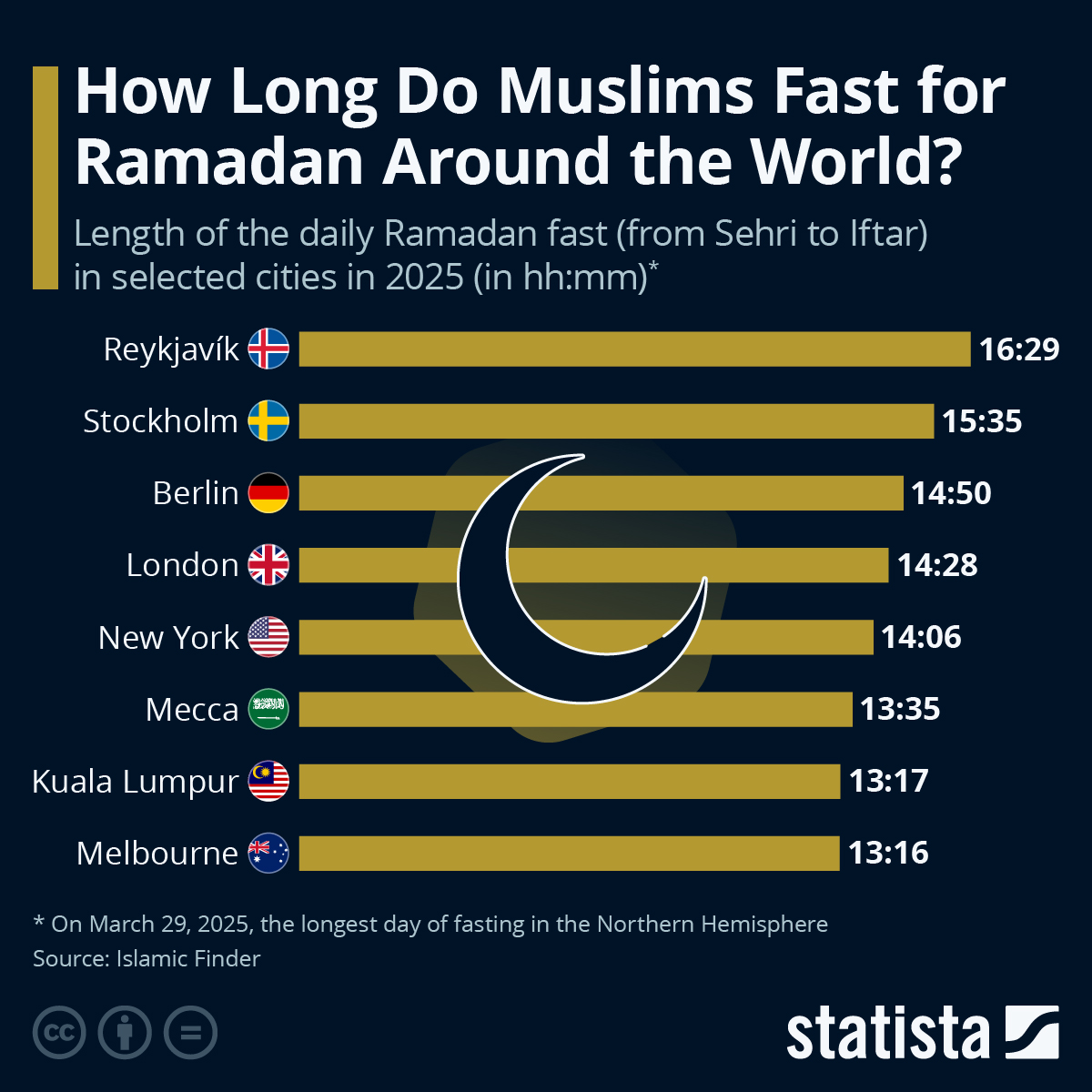Ramadan starts on Sunday evening, with the first day of fasting on Monday, March 11 this year. The holy month is based on the Islamic lunar calendar which is 11 days shorter than the Gregorian solar year, and so its start shifts earlier each year. While the number of days of Ramadan are equal for all Muslims observing it around the world, the length of the daily fast is not.
During Ramadan, observers vow to abstain from eating, drinking, smoking and sexual activities through daylight hours. This means that those living further north have to fast for much longer than their counterparts living closer to the equator or even to those in the Southern hemisphere, which is currently tilted away from the sun. This chart, based on data from website islamicfinder.com, shows how Muslims fasting for Ramadan in Oslo theoretically will have to do so for 15 hours and 15 minutes, while those living in Jakarta, Indonesia, will only need to fast for approximately 13 hours and 13 minutes. Meanwhile, those living in Melbourne will have just 13 hours and 25 minutes of daylight, depending on the exact day of the Ramadan month.
With the dates of Ramadan moving, there can be a significant difference in the length of fasting depending on the year. For example, in 2013, Ramadan took place during the peak of summer for the Northern Hemisphere, with countries such as Norway experiencing sundown for only around three hours at night. This meant practicing communities faced fasts lasting upwards of 20 hours. To counterbalance this, Muslims may also observe Ramadan using the timetable of Mecca (13 hours and 30 minutes in 2024) or their nearest Muslim city.





















